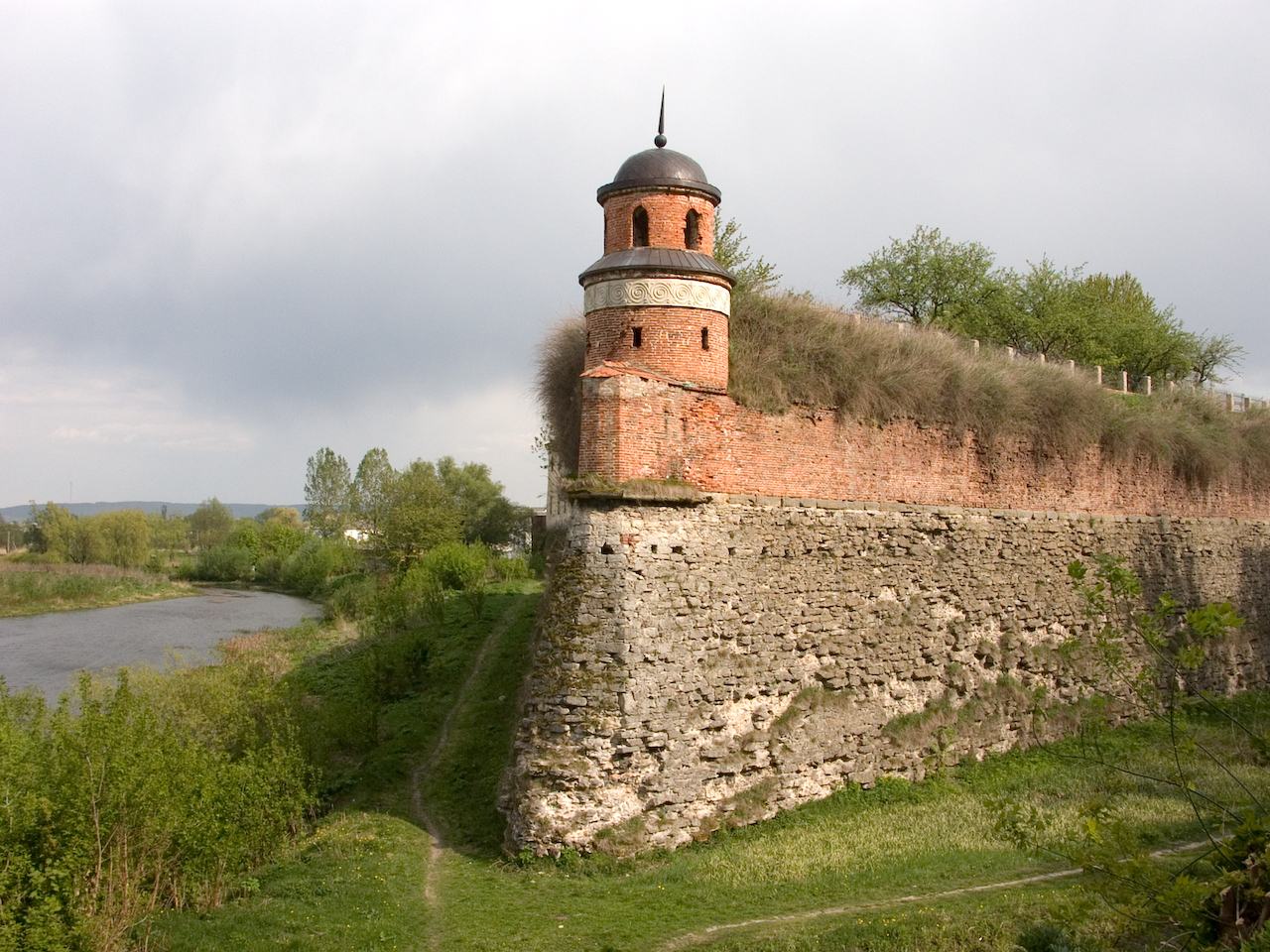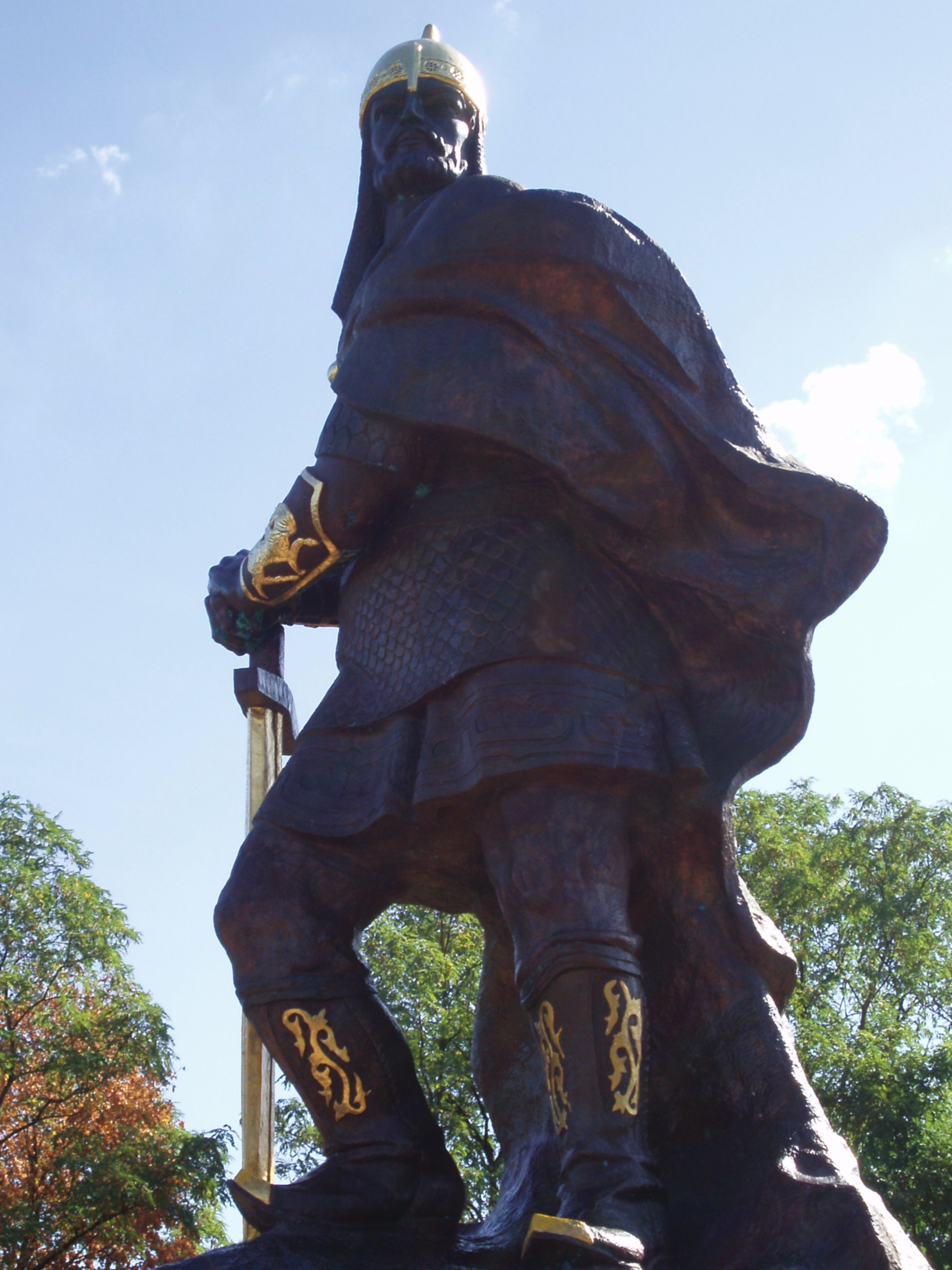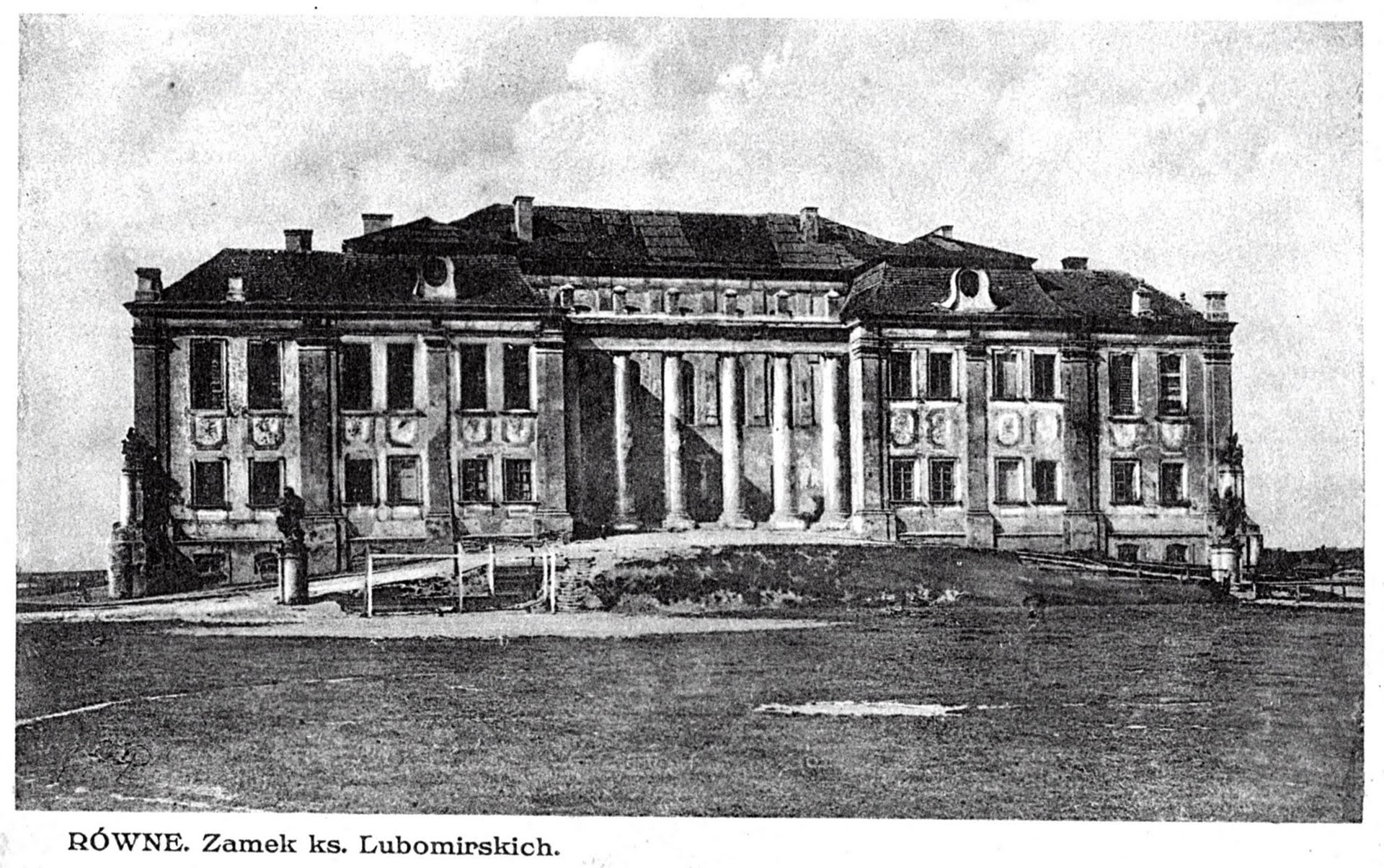|
Battle Of Brody (1941)
The Battle of Brody (other names in use include Battle of Dubna, Battle of Dubno, Battle of Rovne, Battle of Rovne-Brody) was a tank battle fought between the 1st Panzer Group's III Army Corps and XLVIII Army Corps (Motorized) and five mechanized corps of the Soviet 5th Army and 6th Army in the triangle formed by the towns of Dubno, Lutsk and Brody between 23 and 30 June 1941. It is by far the battle with the largest number of tanks participating (in myth, Battle of Prokhorovka, colloquially and incorrectly referred to as The Battle of Kursk is seen as the biggest tank battle). It is known in Soviet historiography as one of the "border defensive battles". Although the Red Army formations inflicted heavy losses on the German forces, they were outmanoeuvred and suffered enormous losses in tanks. Poor Soviet logistics, German air supremacy and a total breakdown in Red Army command and control ensured victory for the Wehrmacht despite overwhelming Red Army numerical and techn ... [...More Info...] [...Related Items...] OR: [Wikipedia] [Google] [Baidu] |
11th Panzer Division (Wehrmacht)
The 11th Panzer Division ( en, 11th Tank Division) was an armoured division in the German Army (1935–1945), German Army during World War II, established in 1940. The division saw action on the Eastern Front (World War II), Eastern and Western Front (WWII), Western Fronts during the Second World War. The 11th Panzer Division did not participate in the war until the invasion of Yugoslavia. It fought in the Soviet Union from 1941 to 1944 and, in the last year of the war, in southern France and Germany. The formation's emblem was a ghost. History The 11th Panzer Division was formed on 1 August 1940 from the 11th ''Schützen-Brigade'' and the ''Panzer Regiment 15'' removed from the 5th Panzer Division (Wehrmacht), 5th Panzer Division and elements of the 231st Infantry Division (Wehrmacht), 231st Infantry Division, 311th Infantry Division (Wehrmacht), 311th Infantry Division and 209th Infantry Division (Wehrmacht), 209th Infantry Division. Most of its members were from Silesia (Wehr ... [...More Info...] [...Related Items...] OR: [Wikipedia] [Google] [Baidu] |
Dubno
Dubno ( uk, Ду́бно) is a city and municipality located on the Ikva River in Rivne Oblast (province) of western Ukraine. It serves as the administrative center of Dubno Raion (district). The city is located on intersection of two major European routes, E40 and E85. The city is estimated to have a population of . It is located within the historic region of Volhynia. In Soviet times it was home to the Cold War facility Dubno air base. The city is also famous for its fortress. History Middle Ages First mentioned in a chronicle of 1100, when it was in possession of Yaroslav the Wise's grandson David of Brest , Dubno was even a seat of local princes for a short period of time. In 1240 the town was raided by the Mongols. In the early 14th century the region was the subject of Polish- Lithuanian rivalry, as a result of which Dubno became part of the latter. However, soon after with the Union of Krewo (1385), it came under Polish influence as part of the Polish-Lithuanian U ... [...More Info...] [...Related Items...] OR: [Wikipedia] [Google] [Baidu] |
Korosten
Korosten ( uk, Ко́ростень, ; historically also ''Iskorosten'' ) is a historic city and a large transport hub in the Zhytomyr Oblast (province) of northern Ukraine. It is located on the Uzh River. Korosten serves as the administrative center of the Korosten Raion (district) . As of January 2022 Korosten's population was approximately Name There are different theories about the origin of the name of the city. The name may be derived from the word ''korost'', 'brushwood, bushes, shrubbery'; the form ''Iskorosten'' sometimes found in early sources is probably based on the common repetition of prepositions in Old East Slavic: ''iz grada iz''... 'from the city from...'. Another theory holds that the city was built entirely of wood, and its walls were surrounded by an oak fence, unhewn, with bark, leading to the name Is-koro-sten, i.e. the city "from bark on the wall" in Ukrainian. Alternatively, the city might have been named after the sun god Khors/Xors (Horus) - the m ... [...More Info...] [...Related Items...] OR: [Wikipedia] [Google] [Baidu] |
Rovno
Rivne (; uk, Рівне ),) also known as Rovno (Russian: Ровно; Polish: Równe; Yiddish: ראָוונע), is a city in western Ukraine. The city is the administrative center of Rivne Oblast (province), as well as the surrounding Rivne Raion (district created in the USSR) within the oblast.On bringing the name of Rovno city and Rovno Oblast in accordance to rules of Ukrainian spelling . . 11 June 1991 Administratively, Rivne is incorporated as a cit ... [...More Info...] [...Related Items...] OR: [Wikipedia] [Google] [Baidu] |
Bug River
uk, Західний Буг be, Захо́дні Буг , name_etymology = , image = Wyszkow_Bug.jpg , image_size = 250 , image_caption = Bug River in the vicinity of Wyszków, Poland , map = Vistula river map.png , map_size = 250px , map_caption = Bug River through Ukraine, Belarus and Poland , pushpin_map = , pushpin_map_size = 250px , pushpin_map_caption= , subdivision_type1 = Country , subdivision_name1 = Poland, Belarus, Ukraine , subdivision_type2 = , subdivision_name2 = , subdivision_type3 = VoivodeshipVoblastOblast , subdivision_name3 = Podlaskie, Mazovian, Lublin, Brest, Lviv , subdivision_type4 = , subdivision_name4 = , subdivision_type5 = , subdivision_name5 = , length = , width_min = , width_avg = , width_max = , depth_min = , depth_avg = , depth_max = , discharge1_location= Se ... [...More Info...] [...Related Items...] OR: [Wikipedia] [Google] [Baidu] |
Generaloberst
A ("colonel general") was the second-highest general officer rank in the German ''Reichswehr'' and ''Wehrmacht'', the Austro-Hungarian Common Army, the East Germany, East German National People's Army and in their respective police services. The rank was equal to a four-star full general but below a general field marshal. The rank was equivalent to a ''Generaladmiral'' in the ''Kriegsmarine'' until 1945 or to a ''Flottenadmiral'' in the ''Volksmarine'' until 1990. It was the highest ordinary military rank and the highest military rank awarded in peacetime; the higher rank of general field marshal was awarded only in wartime by the head of state. In general, a ''Generaloberst'' had the same privileges as a general field marshal. A literal translation of ''Generaloberst'' would be "uppermost general", but it is often translated as "colonel-general" by analogy to ''Oberst'', "colonel", such as in countries in which the rank was adopted like Russia (, ''general-polkovnik''). "Ober ... [...More Info...] [...Related Items...] OR: [Wikipedia] [Google] [Baidu] |
Battle Of Prokhorovka
The Battle of Prokhorovka was fought on 12 July 1943 near Prokhorovka, southeast of Kursk, in the Soviet Union, during the Second World War. Taking place on the Eastern Front, the engagement was part of the wider Battle of Kursk and occurred when the 5th Guards Tank Army of the Soviet Red Army attacked the II SS-Panzer Corps of the German Waffen-SS in one of the largest tank battles in history. In April 1943, the German leadership began preparing for Operation Citadel, with the objective of enveloping and destroying the Soviet forces in the Kursk salient by attacking and breaking through the base of the salient from north and south simultaneously. The German offensive was delayed several times because of the vacillation of the leadership (Hitler repeatedly delayed launching the attack so that more Tiger tanks could be delivered to the front, hoping that a technical advantage would help him win the offensive) and the addition of more forces and new equipment. The Soviet hig ... [...More Info...] [...Related Items...] OR: [Wikipedia] [Google] [Baidu] |
Operation Barbarossa
Operation Barbarossa (german: link=no, Unternehmen Barbarossa; ) was the invasion of the Soviet Union by Nazi Germany and many of its Axis allies, starting on Sunday, 22 June 1941, during the Second World War. The operation, code-named after Frederick Barbarossa ("red beard"), a 12th-century Holy Roman emperor and German king, put into action Nazi Germany's ideological goal of conquering the western Soviet Union to repopulate it with Germans. The German aimed to use some of the conquered people as forced labour for the Axis war effort while acquiring the oil reserves of the Caucasus as well as the agricultural resources of various Soviet territories. Their ultimate goal was to create more (living space) for Germany, and the eventual extermination of the indigenous Slavic peoples by mass deportation to Siberia, Germanisation, enslavement, and genocide. In the two years leading up to the invasion, Nazi Germany and the Soviet Union signed political and economic pacts for st ... [...More Info...] [...Related Items...] OR: [Wikipedia] [Google] [Baidu] |
Wehrmacht
The ''Wehrmacht'' (, ) were the unified armed forces of Nazi Germany from 1935 to 1945. It consisted of the ''Heer'' (army), the ''Kriegsmarine'' (navy) and the ''Luftwaffe'' (air force). The designation "''Wehrmacht''" replaced the previously used term and was the manifestation of the Nazi regime's efforts to rearm Germany to a greater extent than the Treaty of Versailles permitted. After the Nazi rise to power in 1933, one of Adolf Hitler's most overt and audacious moves was to establish the ''Wehrmacht'', a modern offensively-capable armed force, fulfilling the Nazi régime's long-term goals of regaining lost territory as well as gaining new territory and dominating its neighbours. This required the reinstatement of conscription and massive investment and defense spending on the arms industry. The ''Wehrmacht'' formed the heart of Germany's politico-military power. In the early part of the Second World War, the ''Wehrmacht'' employed combined arms tactics (close-cover ... [...More Info...] [...Related Items...] OR: [Wikipedia] [Google] [Baidu] |
Command And Control
Command and control (abbr. C2) is a "set of organizational and technical attributes and processes ... hatemploys human, physical, and information resources to solve problems and accomplish missions" to achieve the goals of an organization or enterprise, according to a 2015 definition by military scientists Marius Vassiliou, David S. Alberts, and Jonathan R. Agre. The term often refers to a military system. Versions of the United States Army ''Field Manual 3-0'' circulated circa 1999 define C2 in a military organization as the exercise of authority and direction by a properly designated commanding officer over assigned and attached forces in the accomplishment of a mission. A 1988 NATO definition is that command and control is the exercise of authority and direction by a properly designated individual over assigned resources in the accomplishment of a common goal. An Australian Defence Force definition, similar to that of NATO, emphasises that C2 is the system empowering des ... [...More Info...] [...Related Items...] OR: [Wikipedia] [Google] [Baidu] |
Air Supremacy
Aerial supremacy (also air superiority) is the degree to which a side in a conflict holds control of air power over opposing forces. There are levels of control of the air in aerial warfare. Control of the air is the aerial equivalent of command of the sea. Air power has increasingly become a powerful element of military campaigns; military planners view having an environment of at least air superiority as a necessity. Air supremacy allows increased bombing efforts, tactical air support for ground forces, paratroop assaults, airdrops and simple cargo plane transfers, which can move ground forces and supplies. Air power is a function of the degree of air superiority and numbers or types of aircraft, but it represents a situation that defies black-and-white characterization. The degree of a force's air control is a zero-sum game with its opponent's; increasing control by one corresponds to decreasing control by the other. Air forces unable to contest for air superiority or a ... [...More Info...] [...Related Items...] OR: [Wikipedia] [Google] [Baidu] |
German Army (1935–1945)
The German Army (german: Heer, ; ) was the Army, land forces component of the ''Wehrmacht'', the regular German Armed Forces, from 1935 until it effectively ceased to exist in 1945 and then was formally dissolved in August 1946. During World War II, a total of about 13.6 million soldiers served in the German Army. Army personnel were made up of volunteers and conscripts. Only 17 months after Adolf Hitler announced the German rearmament program in 1935, the army reached its projected goal of 36 Division (military), divisions. During the autumn of 1937, two more corps were formed. In 1938 four additional corps were formed with the inclusion of the five divisions of the Austrian Army after the ''Anschluss'' in March. During the period of its expansion under Hitler, the German Army continued to develop concepts pioneered during World War I, combining ground and air assets into combined arms forces. Coupled with operational and tactical methods such as encirclements and "battle of a ... [...More Info...] [...Related Items...] OR: [Wikipedia] [Google] [Baidu] |






.jpg)

.jpg)
